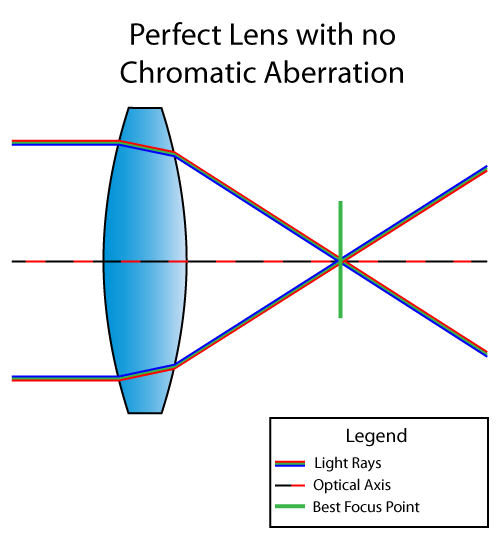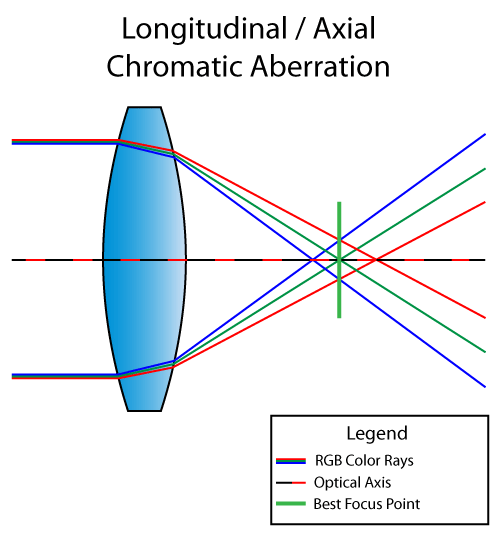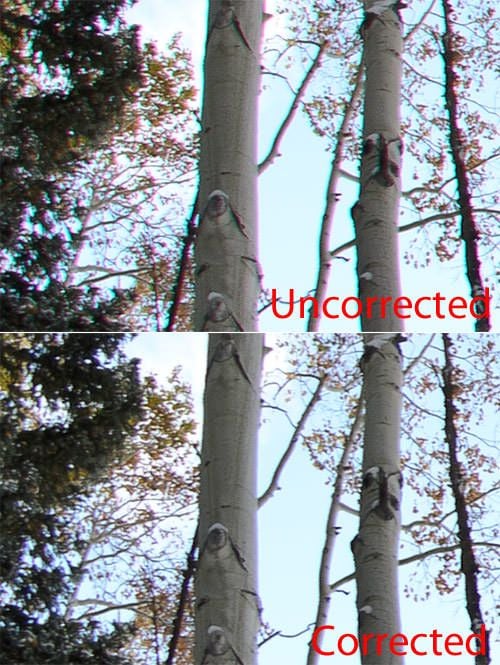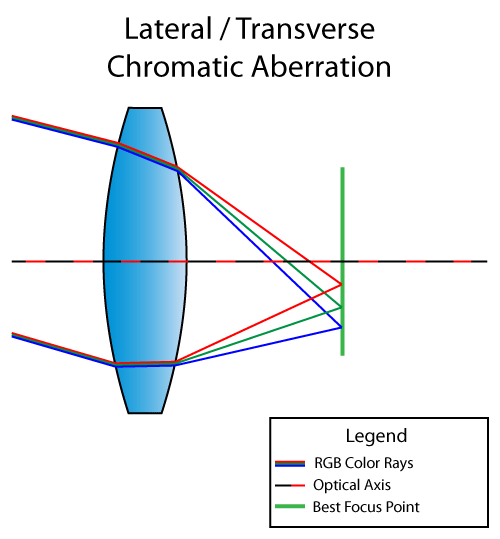Snaps A-Z of Photographic Meanings - Aberration
Posted on
Lens Chromatic Arberration is an optical fault in a lens that creates a less than perfect image. Below you will find the cause and ways to correct the effect.
Chromatic aberration, also known as “color fringing”, is a common optical problem that occurs when a lens is either unable to bring all wavelengths of color to the same focal plane, and/or when wavelengths of color are focused at different positions in the focal plane.
Chromatic aberration is caused by lens dispersion, with different colors of light travelling at different speeds while passing through a lens. As a result, the image can look blurred or noticeable colored edges (red, green, blue, yellow, purple, magenta) can appear around objects, especially in high-contrast situations.
A perfect lens would focus all wavelengths into a single focal point, where the best focus with the “circle of least confusion” is located, as shown below:

In reality, the refractive index for each wavelength is different in lenses, which causes two types of Chromatic Aberration – Longitudinal Chromatic Aberration and Lateral Chromatic Aberration.
Longitudinal Chromatic Aberration
Longitudinal Chromatic Aberration, also known as “LoCA” or “bokeh fringing”, occurs when different wavelengths of color do not converge at the same point after passing through a lens, as illustrated below:

Lenses with Longitudinal Chromatic Aberration problems can show fringing around objects throughout the image, even in the center. Red, Green, Blue or a combination of these colors can appear around objects. Longitudinal Chromatic Aberration can be dramatically reduced by stopping down the lens. Fast aperture prime lenses are typically much more prone to LoCA than slower lenses.
The bottom crop was corrected in Lightroom’s “Lens Corrections” sub-module with a single click. The same can be done in Photoshop, but involves more steps (if not using the Camera RAW tool).

Lateral Chromatic Aberration
Lateral Chromatic Aberration, also known as “transverse chromatic aberration”, occurs when different wavelengths of color coming at an angle focus at different positions along the same focal plane, as illustrated below:

Unlike LoCA, Lateral Chromatic Aberration never shows up in the center and is only visible towards the corners of the image in high-contrast areas. Blue and purple fringing is often common on some fisheye, wide-angle and low-quality lenses. Unlike Longitudinal Chromatic Aberration, Lateral Chromatic Aberration cannot be removed by stopping down the lens, but can be removed or reduced in post-processing software.
Unfortunately, many lenses have both longitudinal and lateral chromatic aberrations present at the same time. The only way to reduce these aberrations, is to stop down the lens (to reduce LoCA) and then fix lateral CA in post-processing software like Lightroom and Photoshop.
While many modern lens manufacturers employ specific techniques to reduce chromatic aberrations using achromatic/apochromatic optical designs and special extra-low dispersion elements, chromatic aberration is still an issue on most prime and zoom lenses that we just have to learn how to get around with.
The good news is that many modern DSLRs incorporate special in-camera post-processing techniques to reduce and even eliminate lens chromatic aberrations and plenty of software packages are also capable of dealing with chromatic aberrations.
Dealing with fringing
More expensive lenses often suffer less from chromatic aberration – an example of where the adage, ‘you get what you pay for’ rings true. However, even if you can’t afford the very best lenses money can buy, all is not lost.
Click the Lens Correction tab in Adobe Camera Raw to tackle chromatic aberration
If you shoot raw files, Chromatic aberration can often be removed, or at least reduced, in post-processing software such as Abobe Lightroom, Adobe Camera Raw and DxO OpticsPro.
The automatic detection and defringing process in Adobe Camera Raw is very quick and very effective, while using the manual sliders enables you to tackle more resilient purple and green halos that sometimes continue to cling to the edges of objects at the extreme edges of the picture.
Extracts taken from :
https://photographylife.com/what-is-chromatic-aberration
And
https://www.techradar.com/news/the-a-to-z-of-photography-chromatic-aberration
Add a comment: